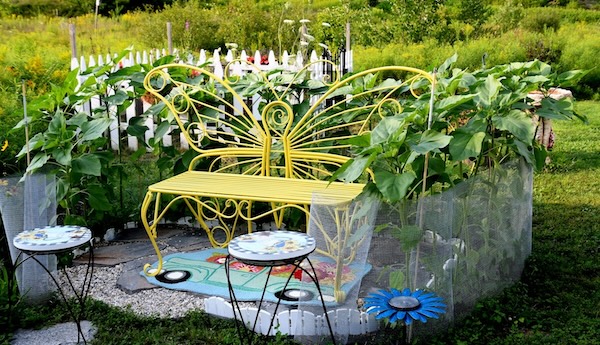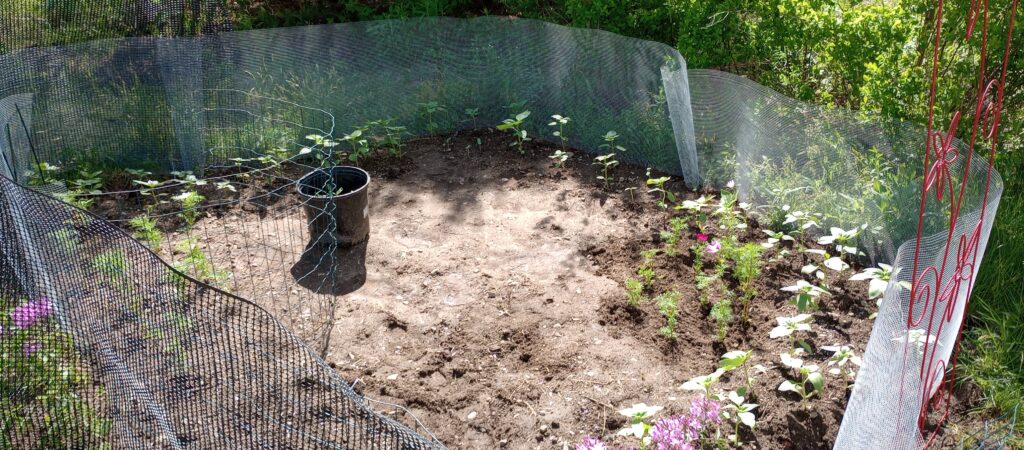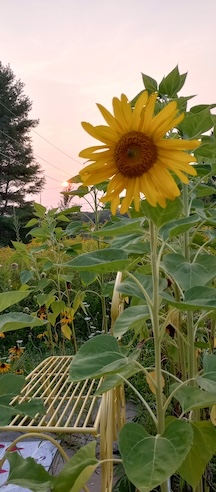By Patti Genest
When mid-April comes to Maine, the urge to be surrounded by growing seedlings can no longer be ignored. With snow still on the ground, visions of sitting on a summer garden bench, surrounded by gigantic sunflower leaves whispering in the wind, is motivation enough for me to start planting.

With four months to realize my dream, I set a large plywood sheet onto barstools in my living room and prepare 50-75 pots (4 inches high by 4 inches in diameter) for planting Mammoth sunflower seeds. I begin by soaking my seeds overnight and filling the pots three-quarters of the way with organic potting soil. I then mist the soil with water and cover the pots with plastic wrap. I position my photography studio (LED) lights on them for 8 hours a day. Once condensation forms on the underside of the plastic wrap, I make tiny holes in it with a pin to provide air. I continue misting the soil as needed.
Then, like a kid waiting for their favorite holiday, I can barely contain my excitement. When the first sprout emerges, I call family and friends much like announcing the arrival of new life and, well, I guess that’s accurate.
As the sunflower seedlings grow, I remove the plastic. When the time draws near for planting in our zone (USDA Pant Hardiness zone 5b), I place the seedlings outside, periodically setting them in the sun to acclimate them to their soon-to-be new home. In they come at night.
At the end of May, I transplant them in a prepared horseshoe-shaped bed. I space the seedlings approximately 8 inches apart, leaving a 2-to-3-foot opening for the “front entrance” of the sunflower house.

For thicker “walls,” one can plant an additional row of sunflowers about 3-4 inches behind the first, placing the seedlings in between the spaces of the first row and forming a staggered row.

To protect the tender seedlings from ground feeders, I place 3-to-4-foot-tall hardware-cloth fencing around the perimeter.
Inevitably, there will be some insect or animal that gets to the small plants. I check them daily, hand-removing insects, and misting leaves with lemon oil and water to deter pests. That process continues until the sunflowers are tall enough to rise above the threat.
Watering every day, I monitor the progress, as proud as any parent of their growth.
Then the fun really begins. Interior decorating ensues, including a bench, table, chairs, birdbath, and statues of garden critters to compliment the natural setting. I add a decorative solar light by the entrance. A stone pathway and welcome mat add to a feeling of home.
I don’t use any chemicals and the bees, birds, and squirrels can safely enjoy the sunflower homes created for them, and me.
Patti Genest lives in Wells, Maine, where she draws inspiration from nature for her writing, photography, and paintings. Her poetry, essays, and photographs have appeared in several Maine publications, including The Maine Sportsman and Zephyr, the literary journal of the University of New England.
This article originally appeared in the spring 2025 issue of The Maine Organic Farmer & Gardener.
